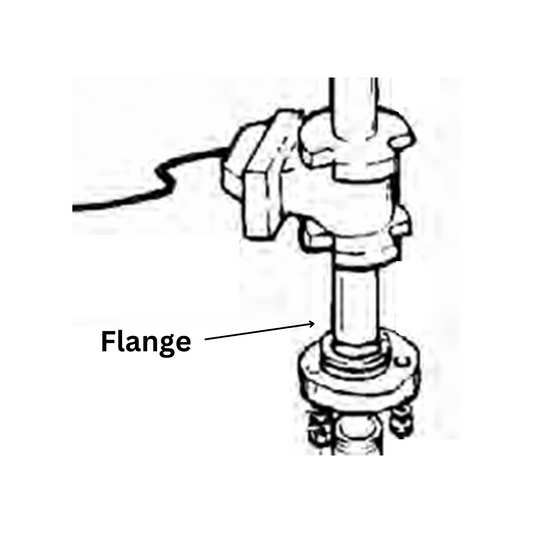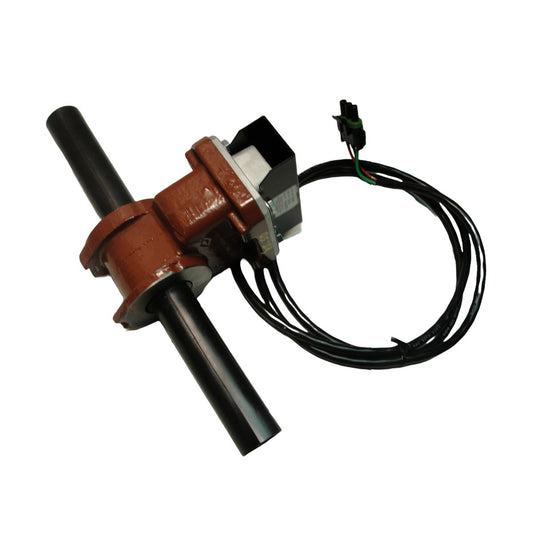You need accurate flow measurements to optimize your operations, and calibration is the key. By calibrating your flow meters, you guarantee the reliability of your measurements and prevent costly errors. Even the slightest deviation can lead to inefficiencies and financial losses. Calibration involves comparing your flow meters against established reference standards, and it's crucial for all types of flow meters, especially mechanical and differential pressure meters. By understanding the importance of calibration, you'll be able to maintain operational efficiency, minimize waste, and reduce costs - and that's just the beginning of how calibration can modify your operations.
Key Takeaways
-
Imagine a pipe spewing out valuable resources, unbeknownst to the company relying on it for profit. The culprit? A malfunctioning flow meter, inaccurate and unchecked. The consequences can be staggering - financial losses, wasted resources, and damage to a company's reputation.
-
But there is a solution. Calibration is the key to unlocking accurate flow meter measurements, the backbone of operational efficiency and industry compliance. Regular calibration is a crucial investment, safeguarding against the devastating effects of process deviations and minimizing waste. By maintaining the credibility and reliability of flow meter readings, businesses can confidently meet regulatory requirements and operate with integrity.
-
From mechanical to modern technologies, every type of flow meter requires calibration to perform optimally. Adhering to standards like ISO/IEC 17025 not only enhances credibility but also affirms technical competence in calibration processes. The bottom line? Calibration is not a choice, but a necessity for businesses that value accuracy and efficiency.
-
If you're struggling to keep your flow meters in check, don't let the pressure build. Reach out to Tru-Kare Tank & Meter Service for expert guidance and support.
Understanding Flow Meter Calibration
Delving into the world of flow meter calibration, you'll uncover it's more than just a routine check-up. It's a significant process that guarantees your flow meters are providing accurate measurements, which is essential for your operations.
This is particularly important for applications such as Agricultural Liquid Flow monitoring, where precise measurements are essential. You'll be comparing your flow meter's readings against established reference standards, such as those from NIST, to verify their accuracy.
This process is essential, especially for mechanical and differential pressure flow meters, which are sensitive to changes in fluid properties. High-accuracy flow meters like the Raven Sensor Shield Flow Monitor are ideal for such applications, providing reliable and precise flow measurements.
As you calibrate your flow meters, you'll typically test them at three measurement points - low, medium, and high - in controlled conditions. This allows you to evaluate their performance and accuracy across their operational range.
Proper documentation and compliance with industry standards during calibration are also crucial, as they help maintain traceability and guarantee quality assurance. This is particularly important in regulated sectors like pharmaceuticals and aerospace, where accuracy is paramount.
Types of Flow Meters Explained
As you prioritize calibration to guarantee accurate flow measurements, it's helpful to comprehend the unique characteristics of different flow meter types.
Mechanical flow meters, like gear and diaphragm types, require frequent calibration due to wear and tear over time, as they're sensitive to fluid properties. High pulse flow meters, such as the Raven RFM 15 Polypropylene Housing, offer durable construction that can withstand a wide range of chemicals and liquids, but still require regular calibration to assure peak performance. You'll also need to calibrate differential pressure (DP) flow meters regularly to account for changes in fluid density, assuring precise readings.
Positive displacement flow meters, including oval gear and screw types, operate by trapping a fixed volume of fluid, but inaccuracies can creep in, making calibration essential.
In contrast, modern technologies like magnetic inductive and ultrasonic flow meters are more stable and require less frequent calibration compared to older mechanical types.
Coriolis mass flow meters offer stable performance across various conditions, but it's still recommended to calibrate them periodically to validate accuracy and reliability.
By recognizing the strengths and weaknesses of each flow meter type, you can refine your calibration schedule to ensure accurate readings and peak performance.
Calibration Procedures and Processes
Because accurate flow measurements depend on reliable calibration, understanding the procedures and processes involved is vital. When you calibrate your flow meter, you're testing its performance against high-accuracy standards under controlled conditions. This typically involves evaluating performance at three measurement points: low, middle, and high flow rates.
You'll also need to make any necessary calibration adjustments to guarantee your meter meets specifications. For instance, using durable flow meters like the Raven Flowmeter Sensor with Standard Pulse Conxall connections can minimize the need for frequent recalibration due to their sturdy construction. Additionally, precision measurement becomes even more important in harsh environments.
The certification process confirms your flow meter's performance and requires strict laboratory protocols to determine a pass or fail status. On average, calibration takes 2 to 3 weeks, depending on the product.
You'll start with an initial evaluation to decide between repair and replacement, followed by detailed documentation for compliance verification. Regular documentation is essential to maintain traceability and accuracy, linking your flow meter's performance to recognized standards like NIST guidelines.
By accounting for potential sources of uncertainty and incorporating repeatability evaluations, you'll confirm your measurement precision and dependability. With thorough calibration methodologies, you'll get accurate and trustworthy flow measurements every time.
Factors Influencing Calibration Frequency
Numerous factors play an essential role in determining the frequency of flow meter calibration, and understanding these influences is key to maintaining accurate and reliable measurements. You'll want to reflect on the type of meter you're using, as some require more frequent checks than others. Mechanical and differential pressure meters, for example, need regular calibration due to their sensitivity to fluid properties.
| Factor | Description | Impact on Calibration Frequency |
|---|---|---|
| Meter Type | Mechanical, differential pressure, magnetic, ultrasonic | Varies by type, with mechanical and differential pressure meters requiring more frequent calibration |
| Environmental Conditions | Temperature fluctuations, corrosive fluids | Increased calibration frequency may be necessary to guarantee accuracy and compliance |
| Operational Changes | Flow rate changes, process modifications | May require adjustments to the calibration schedule to maintain accuracy |
| Industry Standards | API, ISO, NIST guidelines | Dictate specific calibration intervals for different types of flow meters |
Importance of Traceability and Standards
You've established a solid calibration schedule, considering the type of meter, environmental conditions, operational changes, and industry standards.
Now, it's vital to focus on the significance of traceability and standards in your calibration process. Traceability links your measurements back to recognized national or international standards, such as those set by NIST, guaranteeing consistent and reliable measurements.
Accreditation by organizations like NVLAP enhances the credibility of your calibration processes, as it affirms adherence to ISO/IEC 17025 standards.
Maintaining detailed documentation and records of calibration processes is essential for traceability, providing a historical record to verify compliance with industry standards and supporting operational audits.
Regular audits and maintenance of calibration standards are mandated by various industry regulations, emphasizing the significance of traceability to meet safety and compliance requirements.
Best Practices for Calibration
At the forefront of effective flow meter calibration lies a set of best practices that improve accuracy, reliability, and overall performance. By following these guidelines, you'll guarantee your flow meters provide precise measurements, every time.
| Best Practice | Benefits | Why It Matters |
|---|---|---|
| Adhere to ISO/IEC standards | Guarantees accuracy and reliability across diverse applications and industries | Standardization guarantees seamless integration and compliance |
| Regularly review calibration methodologies | Improves accuracy and mitigates potential errors | Staying up-to-date guarantees you're always ahead of the curve |
| Document calibration processes thoroughly | Allows for verification of compliance with OEM standards and industry regulations | Traceability is key to trust and credibility |
| Include repeatability assessments | Confirms precision of measurements, promoting confidence in flow meter performance | Repeatability guarantees consistent results over time |
Ensuring Confidence in Calibration
With calibration being a critical factor in flow meter accuracy, guaranteeing confidence in the process is paramount. You want to be certain that your flow meters are calibrated to the highest standards, and that's where NVLAP accreditation comes in. Overseen by NIST, this accreditation signifies that calibration facilities meet rigorous ISO/IEC 17025 standards, giving you confidence in the accuracy of your flow meter calibrations.
When you work with an NVLAP-accredited lab, you can trust that they're committed to maintaining technical competence and credibility. They participate in biennial proficiency testing, which verifies their calibration results are reliable.
Plus, their documented quality management systems provide assurance that they adhere to calibration standards, nurturing trust among users like you. Regular audits of accredited labs confirm compliance with calibration documentation and operational accuracy, reinforcing the reliability of your flow meter measurements.
Benefits of Regular Calibration
Numerous industries rely on flow meters to accurately measure fluids, making regular calibration essential for maintaining operational efficiency and compliance.
You can't afford to have inaccurate flow measurements, as even a 1% deviation can lead to significant financial losses. By calibrating your flow meters regularly, you guarantee consistent measurement accuracy and prevent costly regulatory penalties.
Regular calibration also improves resource optimization, allowing you to minimize waste and reduce operational costs.
You'll be able to precisely measure water, fuel, and chemicals, making the most of your resources. Plus, continuous calibration helps identify wear or drift in flow meters, facilitating timely maintenance that enhances overall system reliability and performance.
Frequently Asked Questions
What Is the Purpose of Meter Calibration?
You calibrate meters to guarantee accuracy by comparing their performance against recognized standards, like NIST. This process verifies your meter's performance, identifies discrepancies, and corrects errors, giving you confidence in your flow measurements and optimizing your operations.
What Is the Importance of Calibration?
You need calibration to guarantee accuracy and compliance, as it optimizes resource management, reduces costs, and prevents hazards, while maintaining regulatory adherence and manufacturer specs - giving you confidence in your measurements and business decisions.
What Is the Primary Purpose of Calibration?
You calibrate to guarantee accuracy, comparing your flow meter's readings against known standards. By doing so, you're verifying its performance and identifying potential discrepancies, which helps you make informed decisions and avoid costly errors down the line.
Why Is Calibration of Energy Meter Important?
You need to calibrate your energy meter to guarantee accurate electrical consumption measurements, prevent financial losses, and comply with regulations, as even small deviations can lead to significant discrepancies and fines over time.
Conclusion
Calibration is the backbone of your flow meter's accuracy. Picture a ripple effect: a single misstep in measurement sends waves of inefficiency and inaccuracy throughout your entire process. Now, imagine the opposite – a symphony of precision and reliability, where every measurement is a harmonious blend of accuracy and efficiency. That's what happens when you prioritize calibration.
Regular calibration isn't a mundane task; it's a shrewd business move that saves you costs, maximizes efficiency, and boosts confidence in your operations. It's a guarantee that your flow meters are the guardians of precision, steadfastly defending your process against errors and miscalculations. With Tru-Kare Tank & Meter Service by your side, you can rest assured that your calibration needs are in expert hands. Reach out to us for help and transform the uncertainty of inaccurate measurements into a triumph of reliability and precision.





